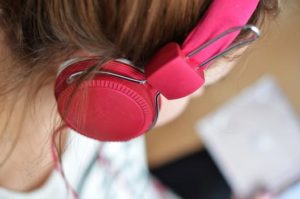 What? Can you repeat that? Turn up the volume! If these are common sayings around your household, it’s likely someone has a hearing problem. People often choose to get a hearing test (or their spouse makes them get one!) when symptoms like these start to show up. Hearing changes can be detected much earlier, however, when testing is completed as a preventive measure, not just as a result of experiencing hearing difficulty.
What? Can you repeat that? Turn up the volume! If these are common sayings around your household, it’s likely someone has a hearing problem. People often choose to get a hearing test (or their spouse makes them get one!) when symptoms like these start to show up. Hearing changes can be detected much earlier, however, when testing is completed as a preventive measure, not just as a result of experiencing hearing difficulty.
What do hearing tests show?
Unlike other tests we experience throughout our lives, a hearing test is not a pass/fail test. Instead, it is a useful tool for determining an individual’s level of hearing or severity of hearing loss. It can determine both the intensity/volume of sounds that are heard by the ear, as well as the pitch. A thorough hearing test goes even further and can show what type of hearing loss is present – conductive, sensorineural, or mixed – and can help audiologists to decide whether medical treatment or an assistive hearing device is needed.
Who needs a hearing test?
Hearing testing is best done at several life stages including infancy, childhood, and adulthood.
- Hearing tests for infants – This is often done before the newborn is even released from the hospital. Since babies are unable to respond verbally to auditory stimuli or follow commands, special tests are done that do not require any response from the infant – they can even be done while they’re sleeping. These tests include Otoacousitic Emission (OAE) screening and Automated Auditory Brainstem Response (ABR).
- Hearing tests for young children – Hearing testing should be completed several times during childhood. After the initial screening in infancy, toddlers should continue to be tested as they grow. Hearing impairments that are caught early can be treated before they cause other developmental delays, such as speech problems. Hearing should also be tested again as the child approaches school age. Appropriate modifications can be made in the classroom environment if the child does have hearing difficulty.
- Hearing testing for adults – Medical professionals recommend that adults have their hearing tested at regular intervals as well. This way, a baseline can be established and even moderate changes can be detected before they become a greater problem. For example, someone who works in a loud environment may experience noise-induced hearing loss. They could prevent further damage if they are simply aware that their hearing level is headed in the wrong direction. Since age-related hearing loss is also common, regular hearing testing can prove useful in early detection and treatment.
So, what happens after a hearing test? Does an infant with impaired hearing need to wear a hearing aid? Can a child with hearing loss be successful in school? Stay tuned for next month’s blog and we’ll answer these questions and more!

